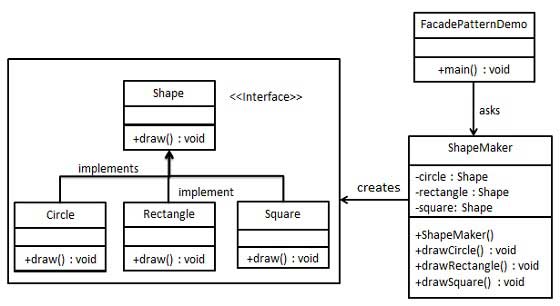参考:
http://www.runoob.com/design-pattern/facade-pattern.html
概述:
外观模式(Facade Pattern)隐藏系统的复杂性,并向客户端提供了一个客户端可以访问系统的接口。这种类型的设计模式属于结构型模式,它向现有的系统添加一个接口,来隐藏系统的复杂性。
这种模式涉及到一个单一的类,该类提供了客户端请求的简化方法和对现有系统类方法的委托调用。
优点:
1、减少系统相互依赖。
2、提高灵活性。
3、提高了安全性。
缺点:
不符合开闭原则,如果要改东西很麻烦,继承重写都不合适。
使用场景:
1、为复杂的模块或子系统提供外界访问的模块。
2、子系统相对独立。
3、预防低水平人员带来的风险。
关键代码:
在客户端和复杂系统之间再加一层,这一次将调用顺序、依赖关系等处理好。注意事项:
在层次化结构中,可以使用外观模式定义系统中每一层的入口。
案例:
<?php
//创建一个接口
interface Shape{
public function draw();
}
//创建实现接口的实体类
class Rectangle implements Shape{
public function draw(){
echo 'Rectangle -> draw()';
}
}
class Square implements Shape{
public function draw(){
echo 'Square->draw()';
}
}
class Circle implements Shape{
public function draw(){
echo 'Circle->draw()';
}
}
//创建一个外观类
class ShapeMaker{
private $circle;
private $rectangle;
private $square;
public function __construct(){
$this->circle = new Circle();
$this->rectangle = new Rectangle();
$this->square = new Square();
}
public function drawCircle(){
$this->circle->draw();
}
public function drawRectangle(){
$this->rectangle->draw();
}
public function drawSquare(){
$this->square->draw();
}
}
//使用外观类
$shapeMaker = new ShapeMaker();
$shapeMaker->drawCircle();
$shapeMaker->drawRectangle();
$shapeMaker->drawSquare();






















